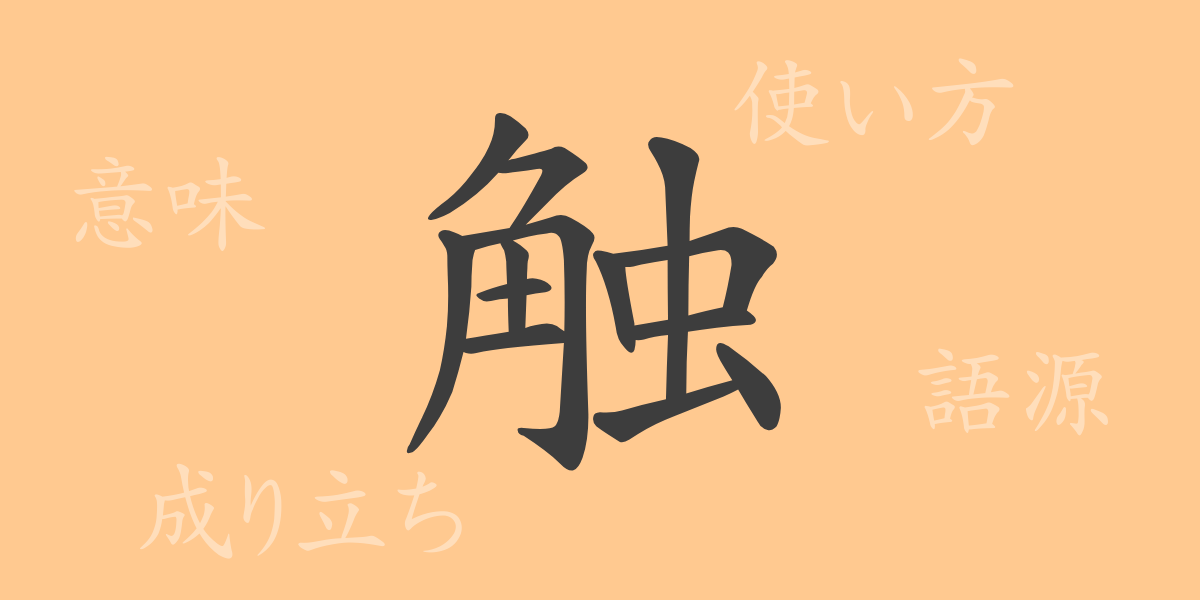The beauty of the Japanese language is reflected in its complex and rich character system. Each Kanji carries its own history and meaning, conveying the depth of Japanese culture and language. The Kanji ‘触’ (ショク), commonly used in our daily lives, may not be fully understood by many in terms of its origins and various usages. This article explores ‘触,’ starting from its etymology to its meanings, usages, readings, and the idioms and proverbs associated with it.
Origins of 触 (ショク)
The Kanji ‘触’ originates from ancient Chinese oracle bone script, initially depicting the act of a hand making contact with something. Over time, the character evolved into its current form. Historically, ‘触’ has been used to convey actions and emotions related to the human sense of touch, one of our five senses.
Meaning and Usage of 触
‘触’ fundamentally means ‘to touch’ or ‘to feel.’ It also has metaphorical uses such as ‘to relate to’ or ‘to mention.’ This character can be incorporated into various words and expressions, allowing it to convey a range of nuances depending on the context.
Readings, Stroke Count, and Radical of 触
The Kanji ‘触’ is widely used in Japan, and its readings and structural elements are as follows:
- Readings: On’yomi (おんよみ) ‘ショク’, Kun’yomi (くんよみ) ‘ふ(れる)’, ‘さわ(る)’
- Stroke Count: 13 strokes
- Radical: Hand (手(てへん))
Phrases, Idioms, and Proverbs Involving 触
There are many idioms and proverbs that include ‘触,’ each carrying unique meanings and applications:
- 触覚 (しょっかく): Refers to the physical sense of touch.
- 触発 (しょくはつ): To be inspired or stimulated to think or act in a new way.
- 禁じ手に触れる: To engage in taboo or forbidden actions.
- 触れ込む: To widely publicize or announce a topic.
Conclusion on 触
We hope this article has deepened your understanding of the Kanji ‘触’ and its rich historical and semantic depths. From representing a basic human sensation like touch to embodying more abstract concepts and actions, ‘触’ illustrates the expressive power of the Japanese language. When you encounter ‘触’ in conversation or writing, remember the history and meanings behind it.

























